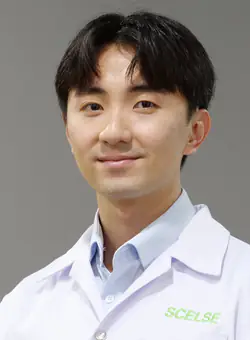
Dr Clarence WH Sim
Research Fellow
Biofilm Biology cluster,
SCELSE-NTU
Email: clarence.simwh@ntu.edu.sg
Dr Clarence WH Sim has joined SCELSE as a Research Fellow under the supervision of Assoc Prof Rebecca Case. His research investigates how seagrasses and their microbiomes respond to anthropogenic stressors, with a broader focus on molecular and microbial ecology—uncovering the hidden diversity and ecological complexities of microbes in marine ecosystems. He holds a PhD in Earth and Environmental Science from NTU, where he studied the dynamics of protists in marine ecosystems, from under-ice Arctic phytoplankton bloom phenology to tropical cell-to-cell parasitism. He also holds a Bachelor of Environmental Studies (Biology) from the National University of Singapore. His goal is to make invisible life visible, helping to inform better conservation and coastal management strategies.
He recently published a paper titled “Temporal dynamics and biogeography of sympagic and planktonic photosynthetic microbial eukaryotes during the under-ice Arctic bloom”, which sheds light on microbial life thriving beneath Arctic sea ice.
Read the paper: https://doi.org/10.1093/ismeco/ycaf075
Clarence is also passionate about science communication and education. He actively engages the public through social media and news platforms (see website) to promote scientific literacy, and delivers guest lectures on microbial and molecular ecology to students. Before joining SCELSE, he was a Research Engineer and Communications Specialist at the Earth Observatory of Singapore, where he worked with scientists to translate geohazard research into impactful video productions.
Clarence is also passionate about science communication and education. He actively engages the public through social media and news platforms (see website) to promote scientific literacy, and delivers guest lectures on microbial and molecular ecology to students. Before joining SCELSE, he was a Research Engineer and Communications Specialist at the Earth Observatory of Singapore, where he worked with scientists to translate geohazard research into impactful video productions.